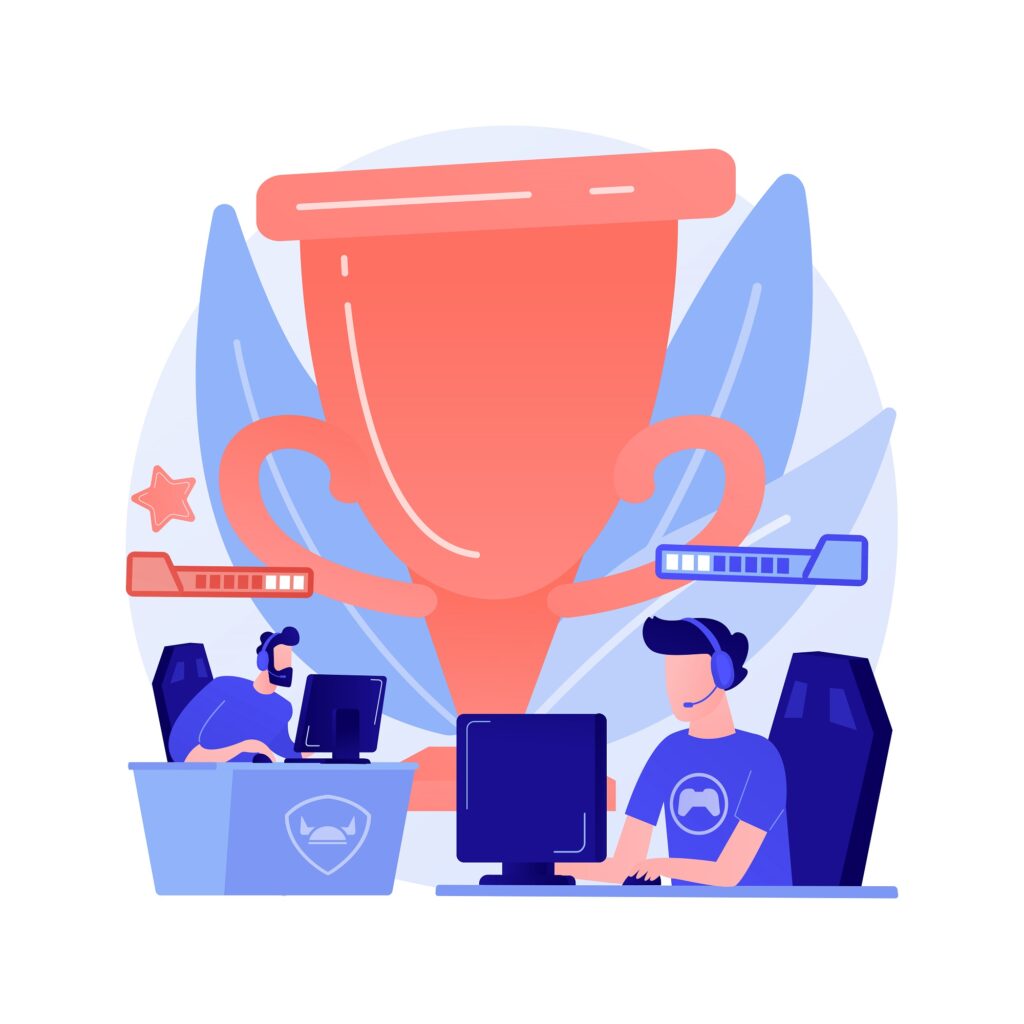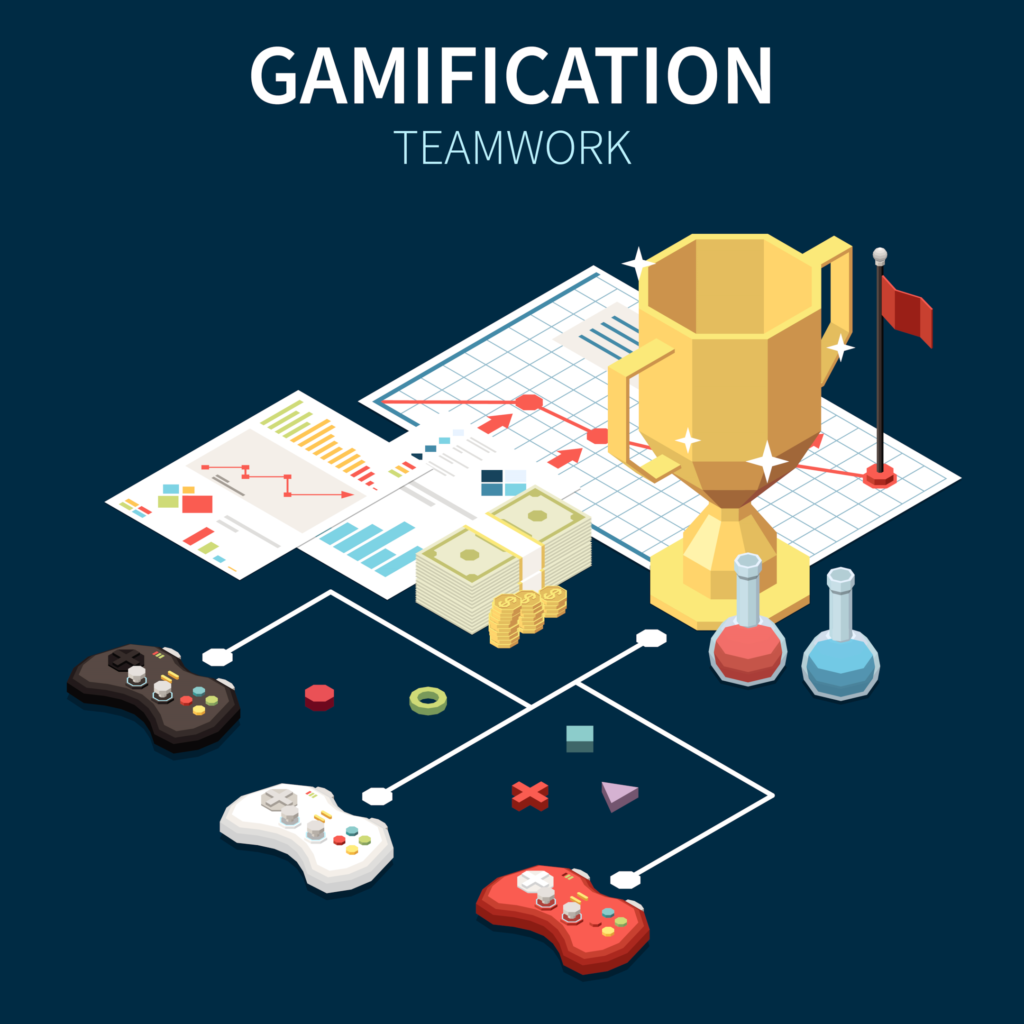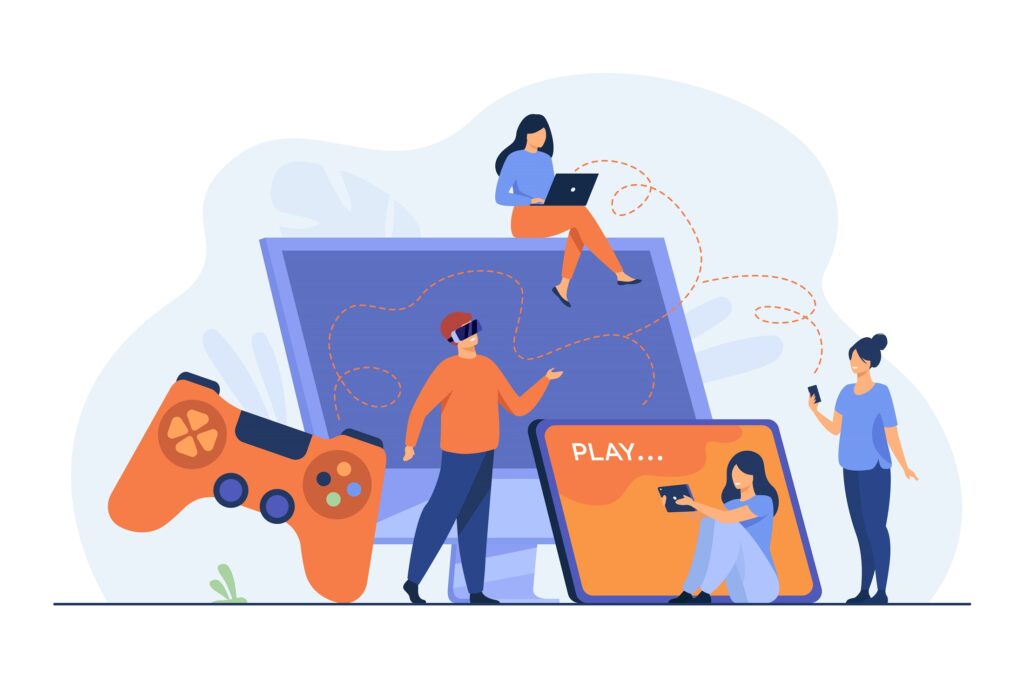Gamification has been gaining popularity in various fields, including corporate training, human resources, education, and social media, due to its ability to engage users and solve problems in a fun and motivating way.
As organizations look for unique and effective strategies to encourage learning, inspire productivity, and foster a positive work environment, gamification emerges as an exciting and promising solution. Yet, applying gaming principles to non-game scenarios requires careful thought and planning to maximize its potential benefits.
This article not only discusses an overview of gamification’s applications but also provides insights on when to use gamification effectively in different contexts.
Key Takeaways:
- Gamification and its Potential: Gamification is gaining popularity due to its unique ability to engage users and solve problems in a fun and motivating way. It is emerging as an effective tool for a range of applications, including corporate training, learning, marketing, and business, turning mundane tasks into rewarding experiences.
- Workplace Applications: Gamification can transform routine training into engaging experiences, boost morale, simplify onboarding, and promote skill building. It helps in improving work culture by fostering healthy competition and improving morale and motivation through rewards and recognition.
- Learning and Education: Gamification in education can encourage continuous learning, provide a safe environment to learn from failures, and make learning more engaging, especially for millennials. Learning becomes an enjoyable quest, fostering greater commitment to the learning journey.
- Marketing and Business Integration: Gamification in marketing strategies can increase user interaction on social media platforms, encourage user-generated content, and enhance sales and marketing strategies. In business, gamification can boost customer loyalty and engagement and increases user retention on websites or apps.
1. Gamification in the Workplace
The use of gamification in the workplace has emerged as a powerful tool for change. Organizations across different sectors are leveraging game mechanics to elevate both employee motivation and their bottom line. The beauty of this approach lies in its versatility — it can turn monotonous training regimes into engaging experiences, boost morale, simplify onboarding, foster healthy competition, and elevate skill building to the next level.
Turn Boring Employee Training into an Engaging Experience
One of the primary uses of gamification in the workplace is to transform what is often perceived as boring or routine employee training into an engaging, interactive learning experience. These training sessions might include areas such as compliance, safety protocols, customer service, or company policies.
As a tool, gamification taps into our intrinsic love for games and competition. By integrating elements like points, levels, badges, leaderboards, and rewards into training sessions, the process becomes significantly more enjoyable and engaging for employees.

Instead of merely absorbing information passively, participants are actively involved in their learning journey, enhancing their interest, motivation, and, ultimately, their information retention.
Imagine a scenario where an employee is learning about cybersecurity protocols. Instead of repetitive modules, gamified learning could transform the experience into a mission where employees are ‘cyber agents’ tasked with protecting the company.Each successfully passed level results in a virtual badge and recognition on a leaderboard. Suddenly, a drab training process is turned into an interactive and engaging learning experience, encouraging greater absorption and application of knowledge.
Improve Employee Morale and Motivation
Workplace morale and motivation are crucial for productivity, employee satisfaction, and the overall success of an organization. Gamification serves as an excellent tool for boosting both.
When employees are recognized and rewarded for their achievements — even with non-monetary rewards like badges, points, or leaderboard rankings — they tend to feel more appreciated and valued. This recognition directly impacts their morale, sparking an intrinsically motivated desire to perform better.

For instance, implementing a simple reward system where your employees earn points or badges for consistently achieving their targets or for going above and beyond in their tasks can create a more positive and driven workplace.
Additionally, showcasing these achievements publicly, such as on a company leaderboard or in weekly meetings, can further boost employee engagement, significantly enhancing morale and motivation within your team.
Make Employee Onboarding Less Intimidating
Starting a new job can be an intimidating and overwhelming process for many, as newcomers are often flooded with a huge amount of new information about the company, their role, and their responsibilities. However, the process of onboarding can be made less daunting and more enjoyable through the use of gamification.
By incorporating game design elements into the onboarding journey, new employees are guided through necessary information and tasks in a more engaging and less stress-inducing way. Imagine instrumental tasks as levels in a game that the employee must pass in their initial weeks.
The tasks could range from learning about company values, understanding their job role, and completing certain onboarding modules. As they navigate their way through these levels, they earn points or badges, transforming the arduous onboarding process into an exciting journey of discovery.
Promote Healthy Competition Among Team Members
A little friendly competition can boost productivity and employee engagement in the workplace. Gamification provides the perfect platform to incite this competitive spirit in a positive and constructive manner.
Game design elements such as leaderboards, rewards, and recognition systems motivate employees to perform better as they strive to outperform their peers and earn the top spot. This competitive environment drives employees not just to achieve their own goals but to contribute to the team and company’s success as well.
Further, this healthy competition fosters a sense of camaraderie among team members. As employees work together to achieve goals or overcome challenges, their collective efforts promote teamwork, mutual respect, and improved workplace culture.
Promote Skill Building
Building and developing new skills is crucial for an employee’s growth and the overall growth of the organization. Gamified learning experiences can make the skill acquisition process more interactive, enjoyable, and effective.
The integration of game elements into a learning context provides employees with a safe space to practice and learn from their mistakes, enhancing their understanding and absorption of information. For example, gamified sales training modules could provide employees the chance to simulate sales negotiations, allowing them to learn and apply new techniques in a risk-free environment.
Additionally, the sense of achievement experienced through gaining points or progressing through levels can act as a significant motivator for continuous learning. This way, employees are encouraged to take ownership of their learning journeys, engage more proactively with the content, and ultimately advance their skills in a more focused, committed manner.
2. Gamification in eLearning
The fields of education and professional training have seen a significant transformation with the introduction of gamification. It’s being increasingly used to make learning experiences more interactive, engaging, and rewarding for learners of all ages – especially millennials who appreciate the blend of technology and creativity.
Encourage Continuous Learning
The journey to gaining knowledge is a never-ending process. However, the challenge lies in ensuring that learners remain committed to this journey. Gamification is an innovative solution to this problem.
By converting learning units or accomplishments into points, levels, or badges, it increases learners’ motivation to persevere. The desire to level-up or earn more badges infuses a fun element into the learning process, making learners more willing to explore new topics or courses.

As an example, Duolingo, the language learning platform, uses rewards and streak counts to keep learners engaged and invested in their language learning journey.
Furthermore, the social aspect of gamification, such as leaderboards or the ability to share achievements on social platforms, appeals to humans’ inherent need for social recognition. Seeing peers progress or achieve may boost the motivation of learners to do better and continue learning.
Provide a Safe Environment for Learners to Fail and Learn
Failure is an integral part of learning. However, the fear of failure can be an intense deterrent for many. Gamification helps to alleviate this fear by providing a safe, low-risk environment for learners to fail, learn from their mistakes, and then advance.
In a game-like learning scenario, making wrong choices or failing to achieve a target won’t have severe or lasting consequences. However, it still provides valuable lessons for learners about what doesn’t work and why.
For instance, gamified simulation exercises can allow learners to apply learned concepts in hypothetical real-world scenarios. Whether they succeed or fail in these exercises, learners get immediate feedback and learn valuable lessons in a risk-free setting. This approach encourages learners to take initiative and make bold moves, thereby enhancing their understanding and mastery of the learning material.
Make the Learning Process More Engaging for Millennials
With technology being second nature to millennials, traditional methods of education and training may fail to hold their interest for long. Gamification, however, speaks their language.
The interactive, tech-driven, and rewarding nature of gamified learning aligns perfectly with what millennials seek. Incorporating game elements like levels, points, badges, avatars, and leaderboards can transform a potentially mundane learning experience into an engaging quest that millennials are much more likely to commit to.
In addition, millennials appreciate flexibility and autonomy in their learning journey. Gamification perfectively addresses this preference by allowing learners to navigate their unique learning paths, choose challenges they want to engage in and learn at their own pace.
3. Gamification in Marketing
In recent years, gamification has been increasingly adopted in marketing to create more engaging, interactive, and effective campaigns. The ultimate goal of marketing is to attract and retain customers while building a relationship with them.
Gamification provides the means to achieve this goal, increasing user interaction on social media platforms, encouraging user-generated content creation, and giving a significant boost to sales and marketing strategies.
Increase User Interaction on Social Media Platforms
Social media platforms are a vast playing field for any marketer, offering direct access to a global audience. However, the challenge lies in encouraging these massive audiences to interact and engage with the brand actively.
Gamification presents an innovative solution. The implementation of game-based elements, such as quizzes, competitions, rewards, or challenges, allows customers to actively participate and interact with the brand rather than passively consuming its content.
Brands like Starbucks successfully use gamification in their marketing campaigns. Their “Starbucks for Life” campaign, where customers can win prizes by collecting game pieces through purchases, keeps customers engaged and frequently returning. This enhanced interaction fosters a deeper connection between the customers and the brand, which can result in greater brand loyalty and advocacy.
Encourage User-Generated Content Creation
User-generated content (UGC) has the power to significantly enhance a brand’s authenticity and credibility. Gamified marketing strategies can provide the motivation customers need to create and share their own content related to the brand.
Competitions, for instance, where users are tasked with capturing a product in a unique way, offer the dual benefit of customer engagement and UGC. This approach not only incentivizes users to interact with the product and the brand, but it also provides the brand with authentic, relatable content for future marketing activities.
Boost Sales or Marketing Strategies
Gamification can be an extremely valuable tool in enhancing the effectiveness of sales and marketing strategies. From customer acquisition and engagement to retention and loyalty, game mechanics can be used to motivate desired customer behaviors.
For example, customers could be encouraged to make more purchases or refer friends in exchange for points or rewards in a loyalty program.
Moreover, gamifying a brand’s sales process can turn it into a more engaging and enjoyable experience. Customers could be taken on a game-like journey where they complete a series of challenges or tasks – like completing a fun quiz to find their perfect product or participating in an online treasure hunt for discount codes.
This enhanced, game-like shopping experience can increase purchase motivation, shopping frequency, and overall customer satisfaction.
4. Gamification in Business
Gamification has emerged as a critical strategy for businesses in today’s digital age. It effectively addresses two core business objectives: boosting customer loyalty/engagement and increasing user retention on websites or applications.
Boost Customer Loyalty and Engagement
In today’s highly competitive market, customer loyalty cannot be taken for granted. Businesses need to constantly engage their customers to maintain their interest and build lasting relationships. Here is where gamification comes into play.
By tapping into the human propensity for competition and achievement, gamified experiences can encourage customers to interact more with a brand. Awarding points for customer activities like making purchases, writing reviews, or referring friends can boost customer engagement. These earned points can be redeemed against rewards, further incentivizing customer participation.
Moreover, this game-driven engagement creates positive associations with the brand, enhancing customer loyalty. For instance, Starbucks’ gamified customer rewards program stands as a successful example, boosting customer loyalty by incentivizing repeat purchases.
Increase User Retention on Websites or Apps
Keeping users interested in a website or application over the long term can often be a challenge for businesses. Gamification strategies can significantly help improve user retention rates.
Design elements like progress bars, leaderboards, badges, or challenges can be incorporated into the user experience to make it more captivating and enjoyable. Such elements help to generate a sense of accomplishment, motivating users to revisit the application or website to continue their ‘journey,’ earn more rewards, or maintain their leaderboard position.
For instance, the language-learning app Duolingo uses gamification effectively to retain users. By turning language learning into a game with daily streaks, XP points, and levels, Duolingo manages to keep its users hooked and coming back for more.
Start Using Gamification with Aribo Today!
Using gamification can be extremely advantageous in a multitude of sectors, including the workplace, eLearning, marketing, and business.
However, it’s critical to grasp how to customize gamification strategies for specific scenarios to make the most of their potential rewards. Although effectively incorporating gamification tactics may seem complex, there’s no need to fret, we got your back.
Aribo is an easy-to-navigate gamification platform that simplifies the process of embedding game components into various operations. Its user-friendly design and extensive selection of customizable functionalities allow you to design and implement gaming strategies that are tailor-made to fit your goals and needs. Reach out to us today!

